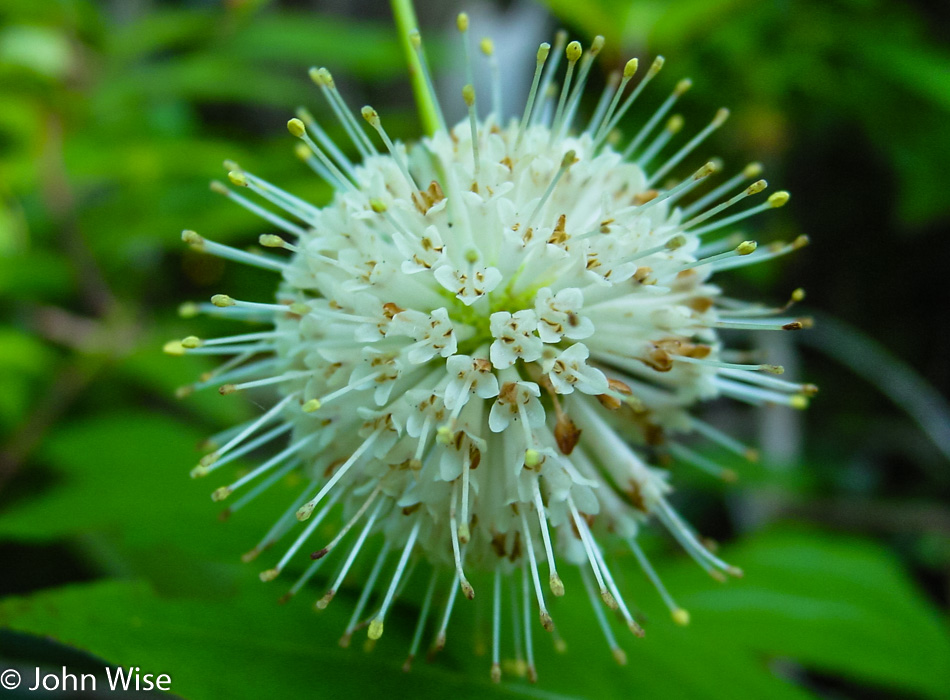
The day starts with a visit to the Fakahatchee Strand State Preserve. We are near the borders of the Everglades National Park and the Big Cypress National Preserve. Our tour through Fakahatchee follows a 2000-foot-long boardwalk that starts among the mosquitoes. As luck would have it, the pesky bloodsuckers don’t follow us in. Making our way into the preserve exposes a rich depth of life and an intriguing entanglement of plants and animal inhabitants. Birds sing from above and scurry below. Flowers burst forward in strange shapes and delightful hues.
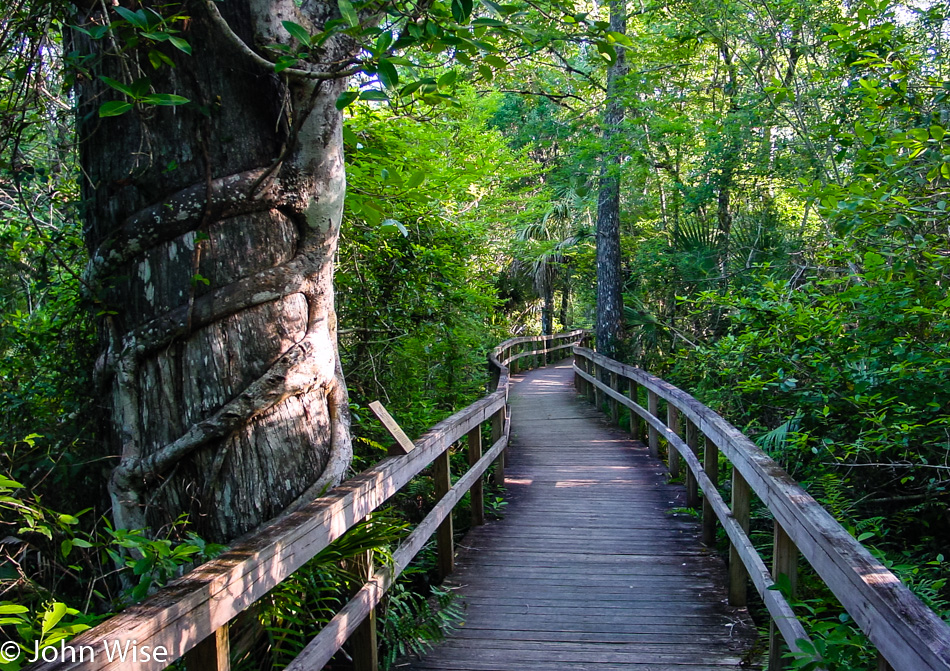
Trees wrap around each other in a symbiotic relationship of dependence as one holds up the other. Spiders dangle. Palm fronds, ferns, and the canopy shade us while we do our best to walk in silence to hear all and see all. Towards the end of the boardwalk is a lagoon harboring our first alligator. The gator floats silently while a large school of fish swims nervously, trapped between a heron and the gator. The fish don’t seem to have much to worry about as both the gator and the heron are lazily lingering; maybe they have already taken their fill. Then we realize that this lagoon may be a landlocked pond due to the low water level in the preserve; if this is the case, these fish have much to worry about.
Silence in these natural settings, aside from the chattering of indigenous species, is always at a premium. It’s not long before a small army of boisterous tourists is making their way up the boardwalk. For us, it is the signal to go, and for them, unfortunately, the heron and the gator responded to the commotion by leaving, too. Along with the preservation of the great wildlands of America, my other wish would be for the tourists to these places of natural beauty to respect the solitude and tranquility so many of us travelers are trying to find at our shared destinations.
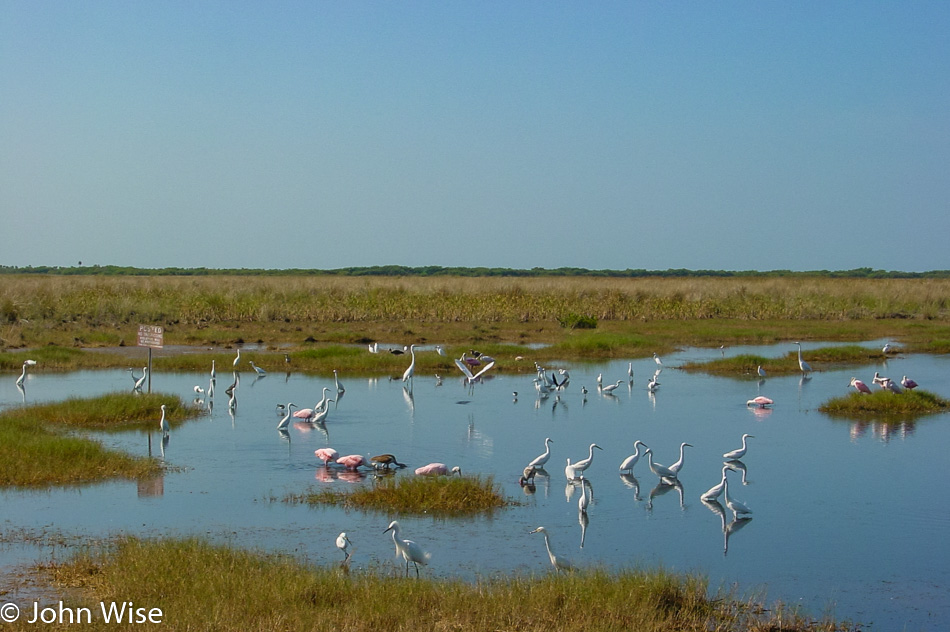
We’re on the approach to the entrance of the Everglades National Park after just three and a half days and 2,355 miles from home. I’m reminded of how my mother-in-law’s excitement gives her the energy for the endurance she needs on such a grueling road trip. Jutta has made three other trips to the United States, and each time, we ask a lot from her because our excitement has us forgetting that we are traveling with a retired lady who might not have the get-up and go that we have. Jutta has accompanied us on hikes in Zion National Park to the Emerald Pools and down into the Grand Canyon, where she was able to witness two Bighorn Sheep butt heads a mere 20 feet in front of her. We have taken her to walk among the giant sequoias near Yosemite, and we’ve walked the trails around geysers and bison in Yellowstone. From inside the caves at Kartchner Caverns to a trip floating down the Colorado River, Jutta has always kept pace with us.
We have strolled amongst the ruins of Chaco Culture National Historical Park and found rest on the grounds of a California Mission. She’s stayed in the Luxor Pyramid in Las Vegas and slept in a cliff dwelling called Kokopelli’s Cave in New Mexico. Watched a grizzly bear feeding with her cub and has been face to face with elephant seals on the Pacific coast. After trying new foods and talking to strangers with strange accents, her back straightens with determined pride. I have come to appreciate my mother-in-law all the more on these road trips because, besides her occasional desire for a quick cat nap, this grand old lady has a spirit and most delightful gratitude that is both honest and from the heart. When, after a trip to America, we hear back from her in Germany about how she recently saw on TV a place she had visited, we hear the excitement all over again as she is full of appreciation regarding the extraordinary journeys she has had the chance to make. If only others had her zest for life and the wherewithal to rise to these challenges.
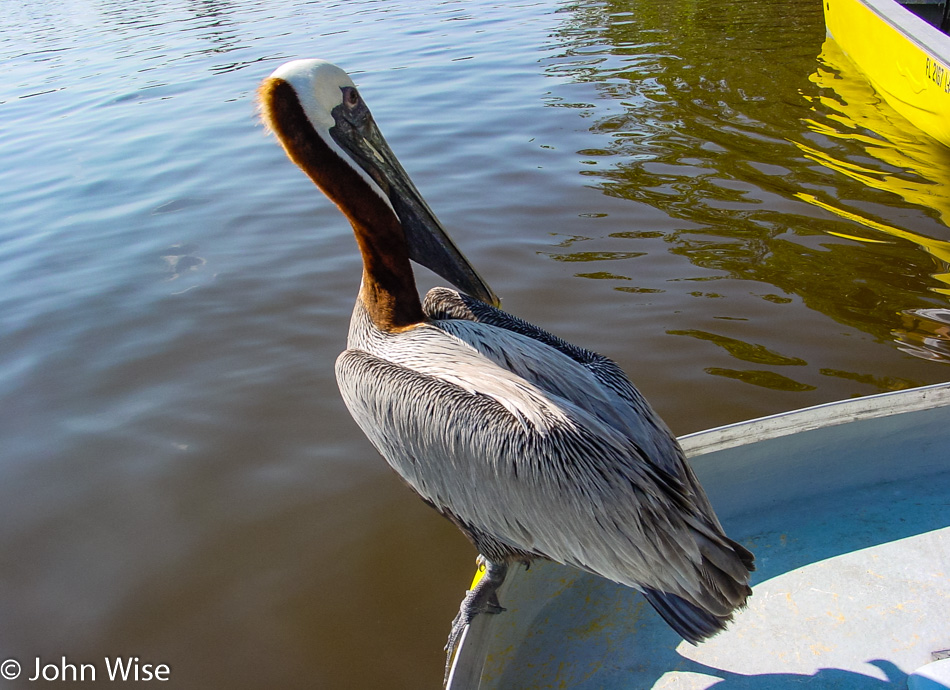
Another challenge greets my mother-in-law: we are asking her to step onto one of the loudest watercraft she may ever take, a fan boat, also known as an airboat. We are in Everglades City with reservations to have Speedy Johnson’s take us out into a private area of the Everglades outside the National Park. We have chosen Speedy, as their tours are limited to 6 passengers.
Gently, we push along out of the dock, and then our pilot hits the gas with a thunderous roar of the unmuffled V-8 engine that screams white noise as we glide over the water. Just as quickly as he gunned the engine, the pilot kills it, letting us float up to our first view of mangroves. Approaching the entangled roots a pelican lands on the edge of our boat just a foot away from where I sit, looking at me like I’m going to pull a fish out of my pocket and throw him a treat.
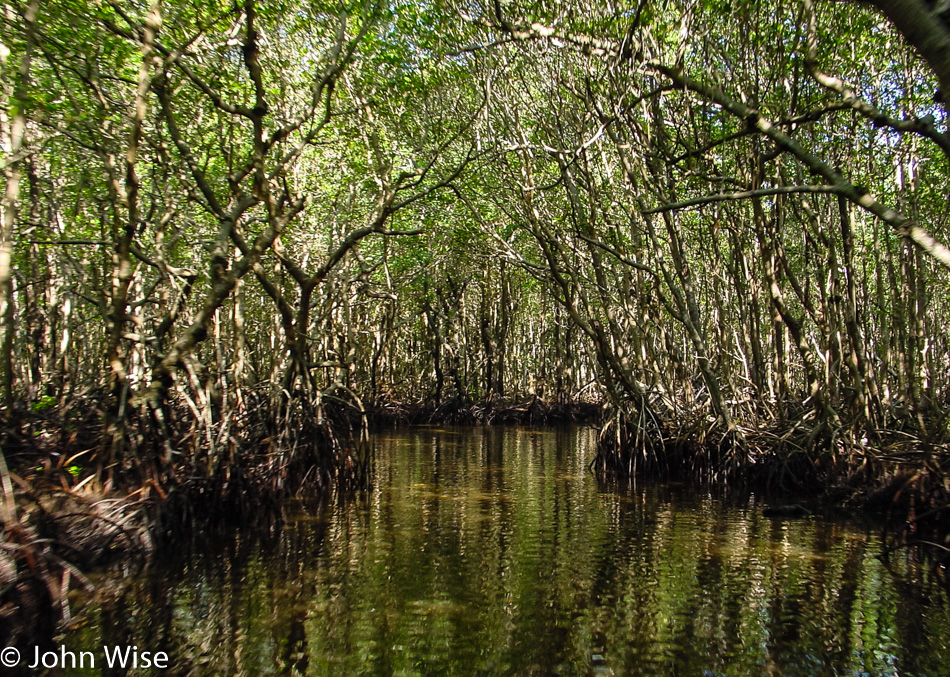
From the open water, our boatman fires up the engine, and we speed directly into the low ceiling of the mangrove forest, with its shallow black waters providing just enough depth to allow our passage. We narrowly missed getting whacked by the mangrove branches as we buzzed by.
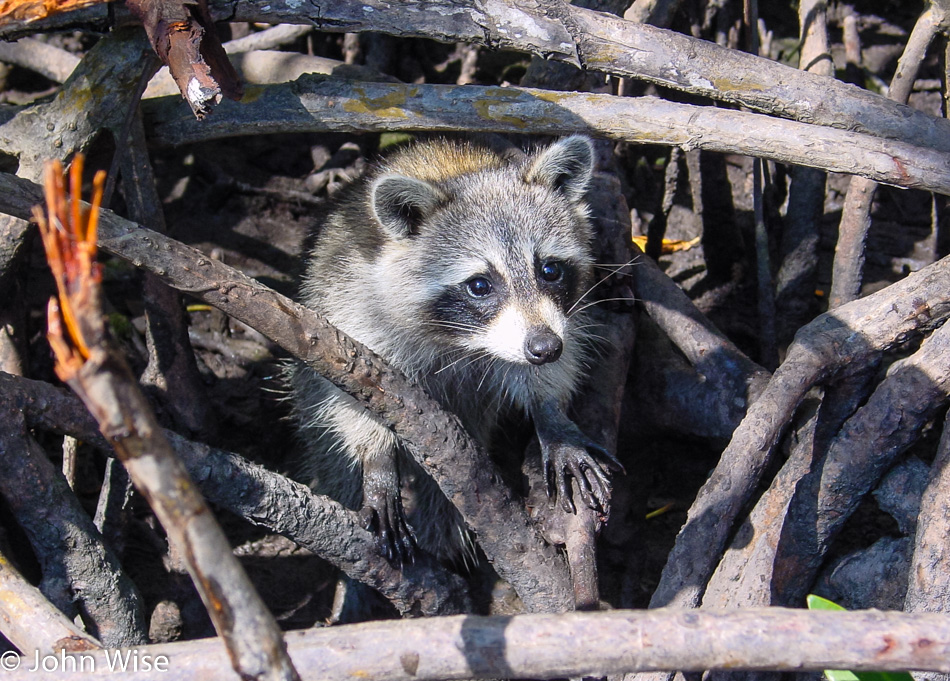
Turns out this little guy is a friend of the boatman who has been enticed by treats. I’m guessing that the adage about feeding the wildlife doesn’t mean a lot when a vendor needs to deliver an experience that satisfies everyone on board.
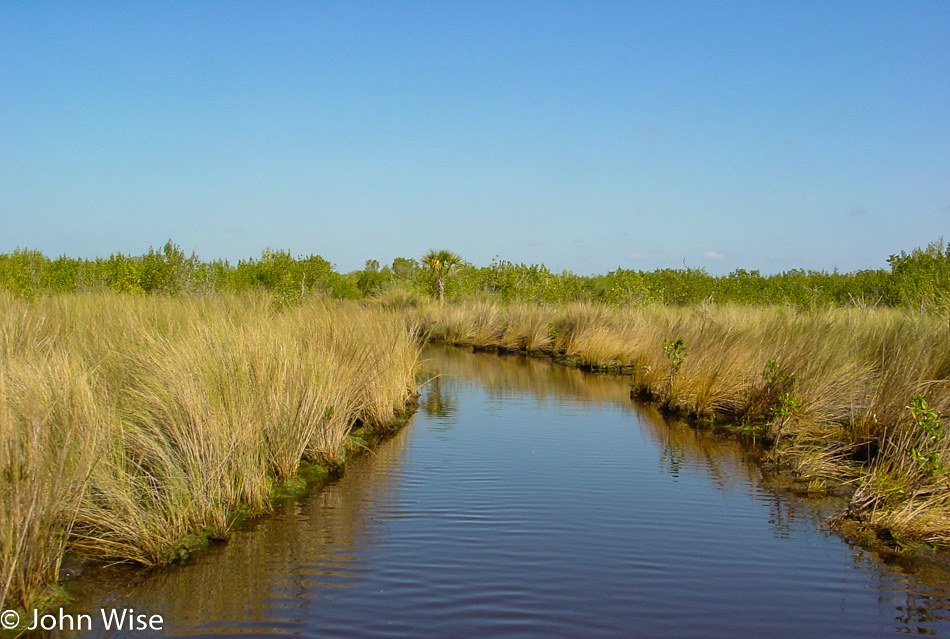
The mangroves are sporadically growing in bunches here and there, or so it looks to me. Between the forests are grasslands.
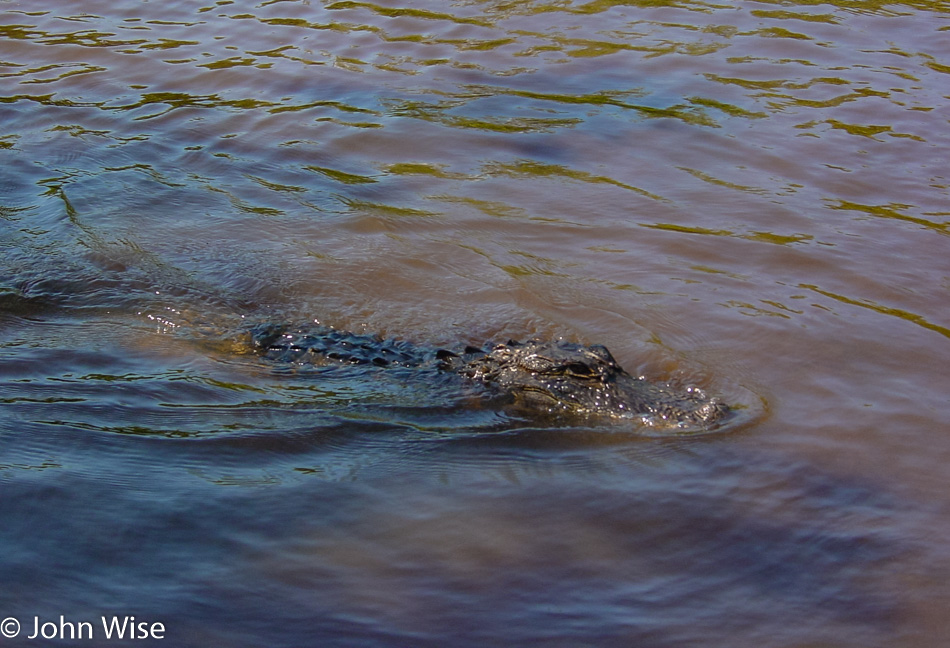
In a larger clearing, we again stop the engine and start to float, we have an approaching guest. This is no ordinary alligator; he has acquired a taste for a meal that doesn’t come from the Everglade he lives and hunts in; he’s coming right at us. He’s coming for marshmallows. My first thought was, “How does he get the marshmallow cleaned out of those huge dagger-like teeth?”
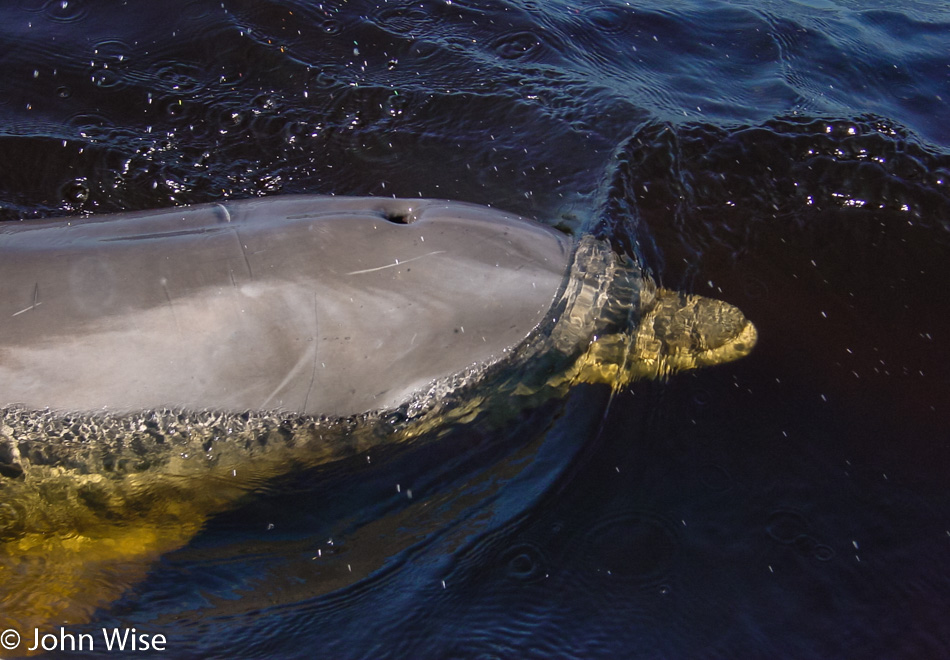
The fan boat heads for another larger open body of water, and the pilot tells us to look at the approaching ripples in the water to our right. It’s not another killer gator; it’s a dolphin who has taken up residence in the Everglades. This is not normal behavior for dolphins; they are social creatures. Our pilot tells us they think that maybe he was separated from his pod or that he’s an outcast and that he took a liking to the warm waters and is now a local. This was an unexpected site; to be sure with all three of us getting down to pet the friendly visitor, we were having a sagenhaft moment.
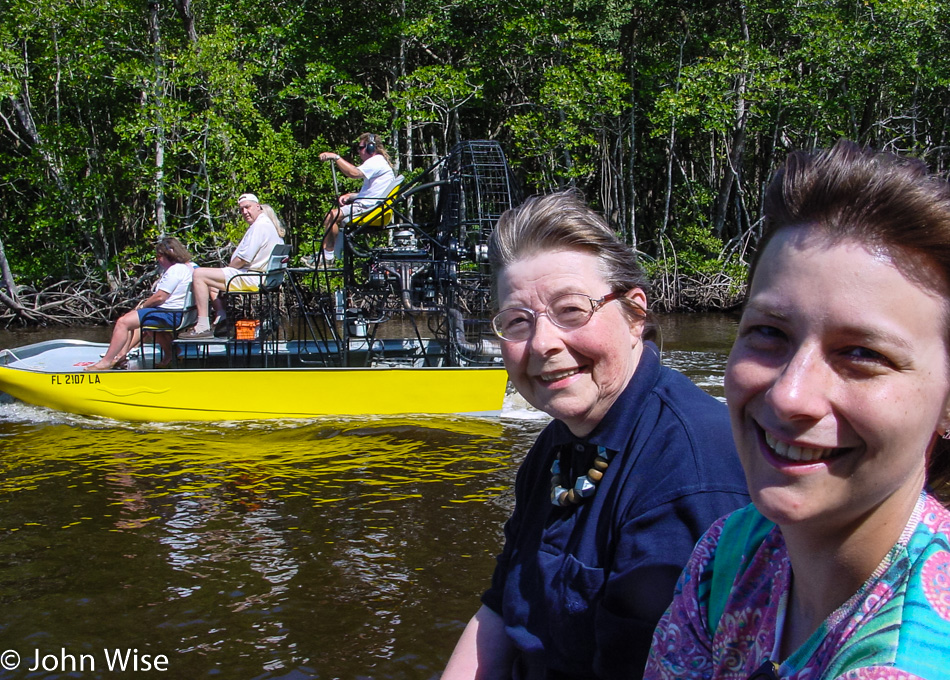
Our one-hour tour is already over, which is okay as our hearing is nearly ruined. We opted to go without the headphones to feel and hear the full experience of the airboat. We cannot get over the delight of how cool this introduction to the Everglades was. Trying to leave Speedy’s, we get turned around again and again until, finally, we are on our way east on Route 41.
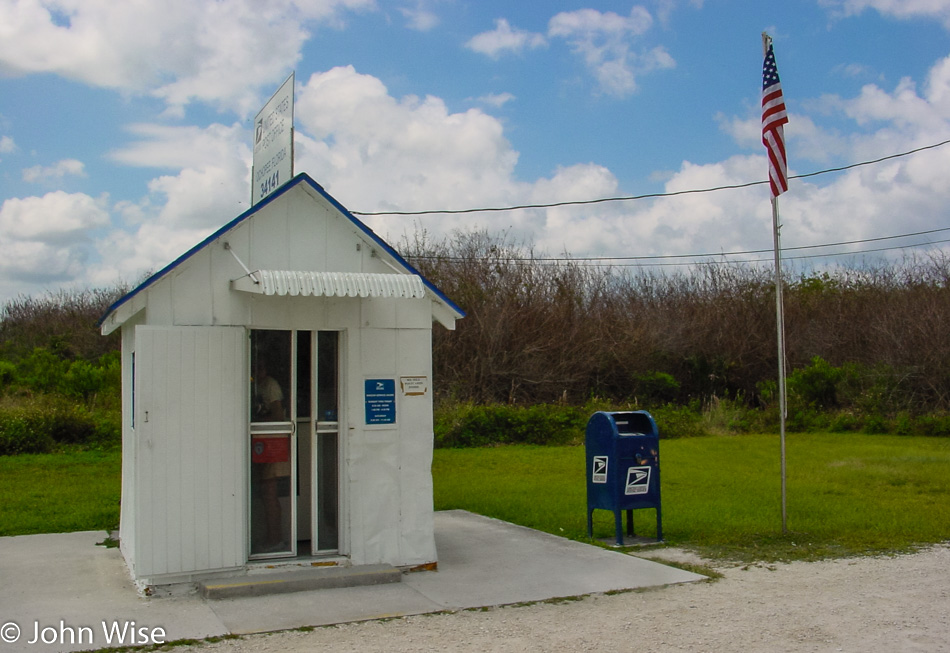
Historic and tiny is the Ochopee Post Office; if one were astute, they might remember that Caroline and I were here back in 1999. This is America’s smallest post office measuring but 7-foot-by-8-foot and has been the stand-in since the other post office burned down in 1953. We are stopping to drop off postcards and to pick up a few new ones from the post office itself to send to friends and family in Germany.
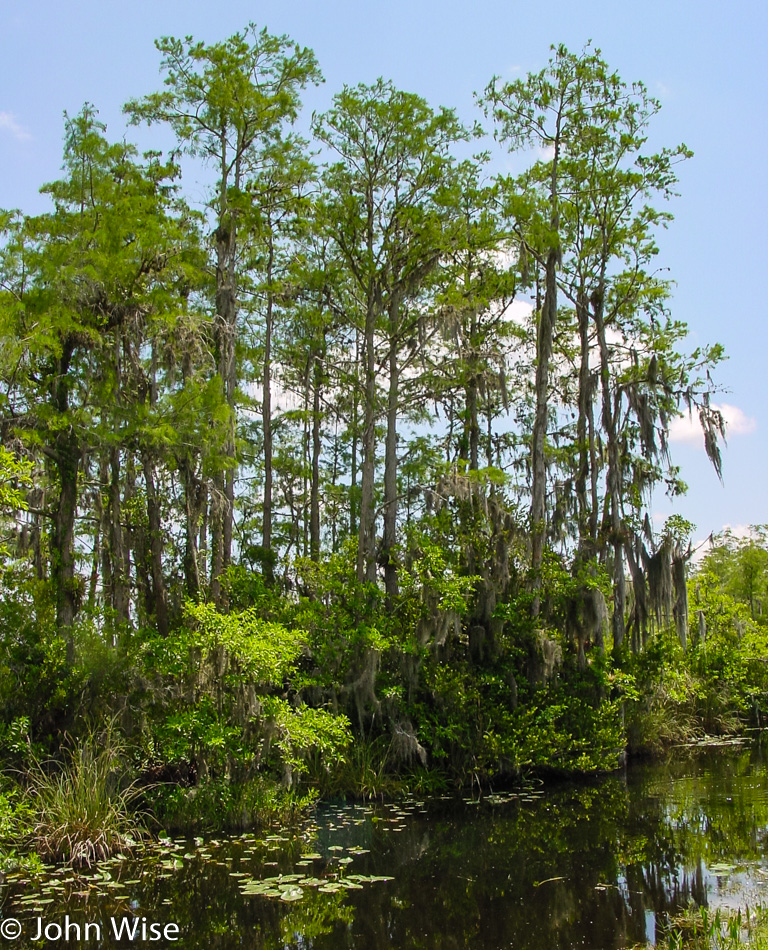
Driving into the Everglades National Park, the road is lined with wildlife from herons to gators, even a couple of vultures. The rest of our day will be spent here in the park. Strikingly flat is the first impression, with a sea of grass in nearly all directions. I expected jungle-like conditions, kind of like the photo above, but with even denser trees and mosses hiding gators and old, toothless men. The trees that are here rise in patches as islands amongst the brown and green grasses.
Even with large National Parks like the Grand Canyon, you have an idea of the task ahead, as you can scan the horizon and from above recognize in the expanse what kind of effort may be necessary to see even a tiny slice of the park. Here in the Everglades, you see the vastness only on your map as the park spreads out across the bottom tip of Florida. On the ground, though with flatness stretching out as far as the eye can see, I feel lost on where to begin. Under these circumstances, it would seem best that we speak with a ranger and find some orientation and a recommendation.
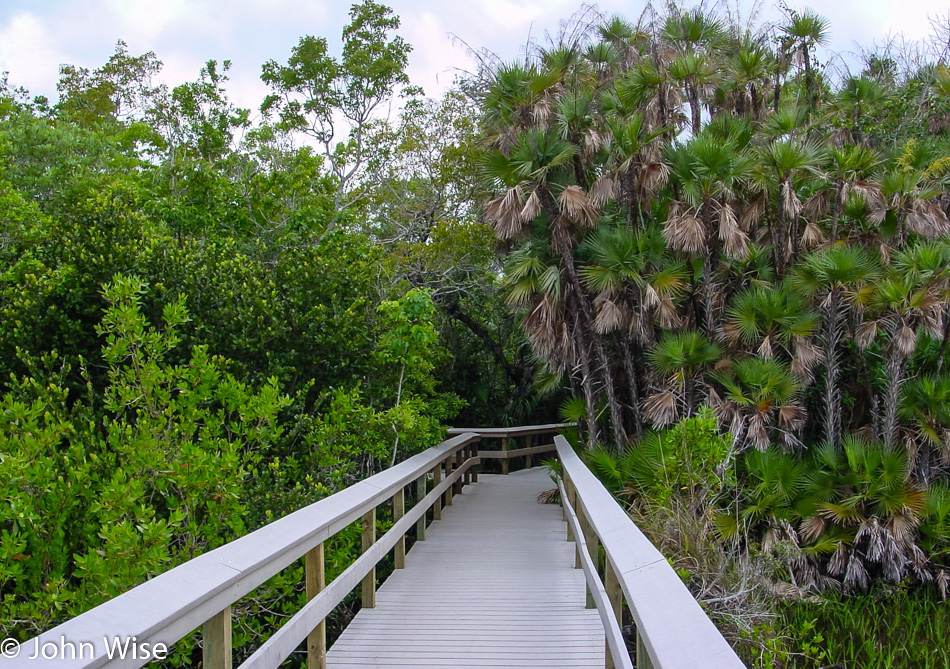
It turns out that this won’t be as intimidating as I first thought. We are in a car and are not prepared to see the park by canoe so our choice is simple: drive the road ahead of us. We’ll be taking the 38-mile long drive from the Ernest F Coe Visitor Center to the Flamingo Visitor Center and hold on to the dream that maybe someday we will make the canoe voyage. There was no way to do a canoe trip through the Wilderness Waterway this year due to the route running 99 miles and requiring seven days to maneuver.
Pa-hay-okee Overlook is our first stop to look out over the river of grass. Matter of fact, Pa-hay-okee is from the Seminole Indian language meaning “grassy waters.” On to the Mahogany Hammock where a trail leads us to a boardwalk over the wetlands and into the tree island, officially known in the glade as a hammock.
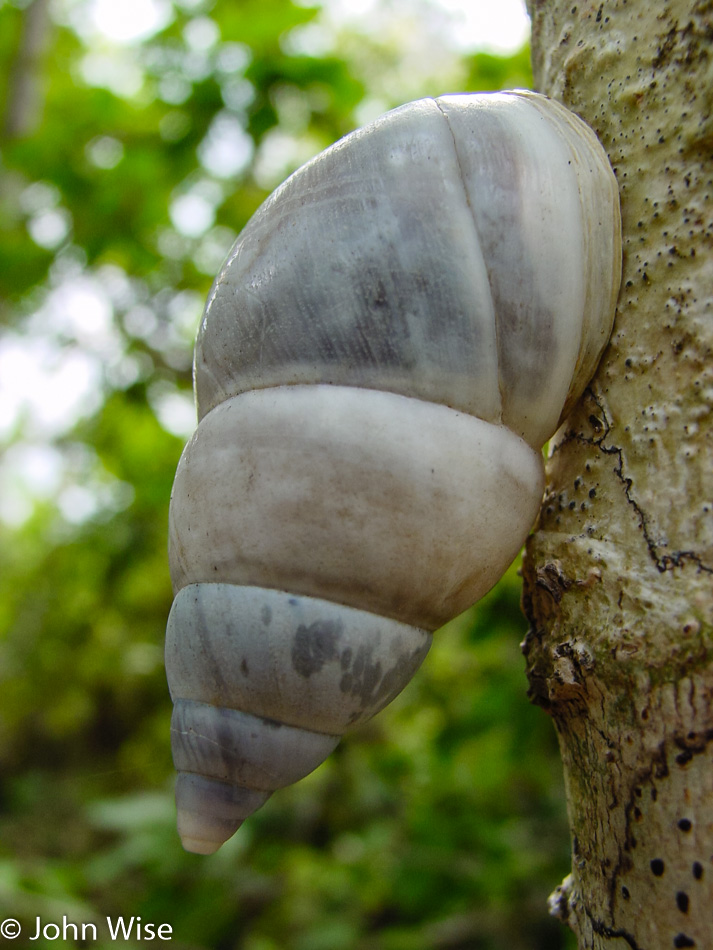
Fresh chutes of green emerge from the dark waters while the detritus of winter still sits on the ground, waiting to be consumed by the land. Inside the hammock, the light is filtered through a dense canopy of treetops and palm fronds, casting pale shade until near the ground, only shadows exist. Birds are heard but rarely seen while silent snails can be found glued into position on the trees we are passing. Earth and plants that can attract even a minimum amount of sunlight are able to thrive. We stop to take a closer look at a tree limb with layers of plants, mosses, grass, and weeds that have taken up residence, similar to what we saw nearly six months ago in the rainforest of Olympic National Park in Washington.
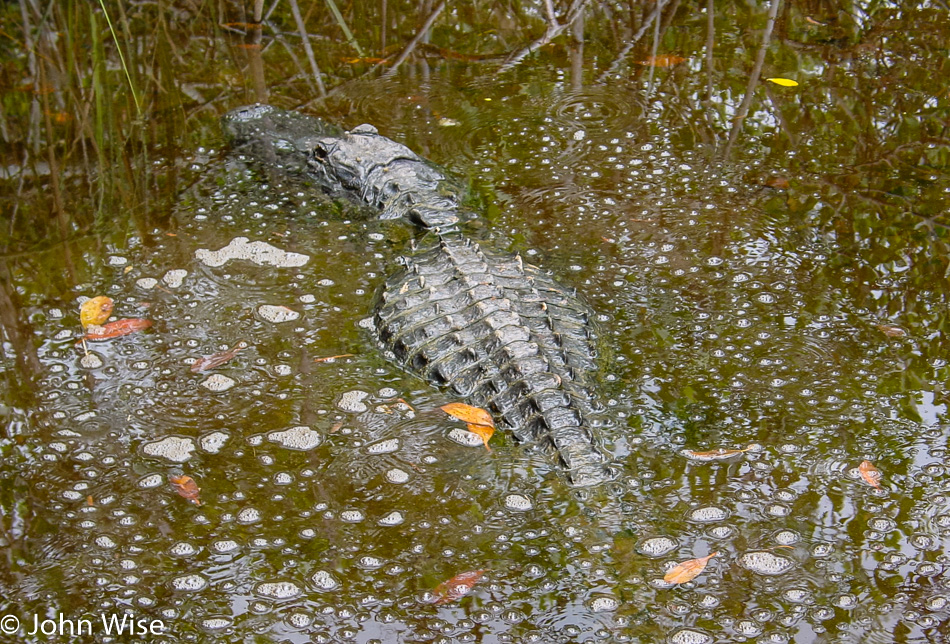
Leaving the hammock, we spot a couple of mangrove trees taking hold in the waters in front of us, and I wonder, if we come back in 15 years, will this be a mangrove forest similar to the one we were touring on the airboat earlier in the day?
West Lake is our destination, but on the side of the road, I spot a sunning gator. Being an intrepid photographer or a fool, I leap out of the car for a better photo. I had been of the opinion that if the gator so much as wiggled a toe, I would be jumping back in the car, but instead, he made a beeline into the water. Fearlessly, I followed him to the water’s edge, half expecting him to be long gone. Instead, I found this large alligator looking over his shoulder just offshore, letting me snap a couple of close-ups.
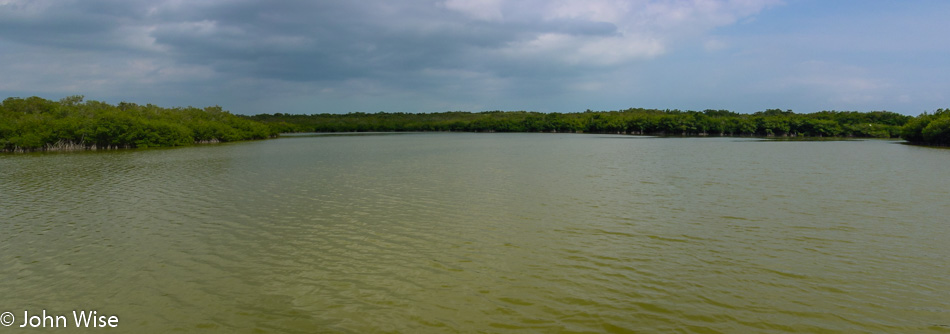
The greenish-yellow waters of West Lake are murky and lonely at first glance. As I scan the horizon, I only find a calm lake lined by a mangrove forest, but upon closer inspection, alligators can be seen in the distance poking their eyes above the water’s surface. From the tree line, a bird takes flight, followed by another and yet another. The birds dart from the safety of the canopy only to quickly dash right back in. Fish splash the surface while gliding alligators dip back out of sight. Mangrove trees push right up against the boardwalk trail, making for an intimate walk back and forth to the lake, giving us a great opportunity to peer into these entangled and otherwise impenetrable forests.
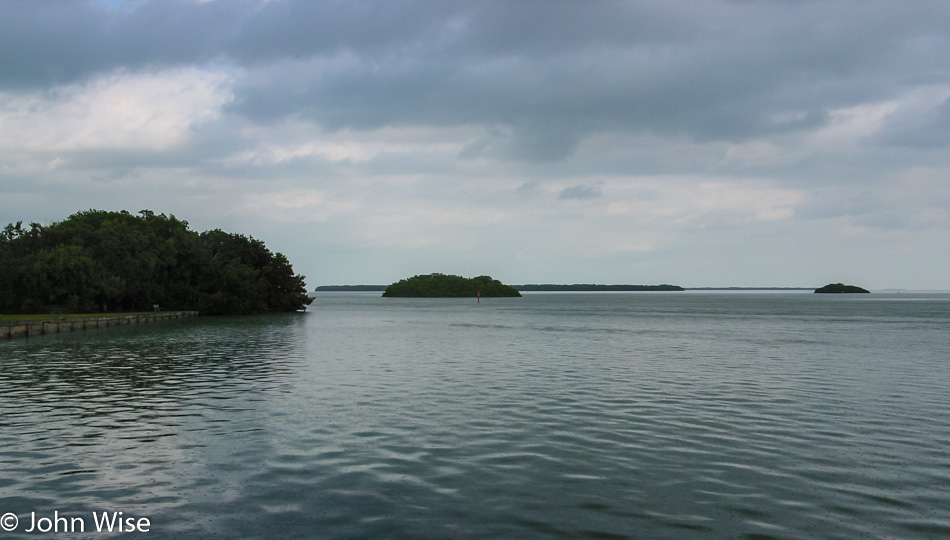
Low dark clouds have been creeping up over the southern tip of the glades, images of powerful storms playback in my memory, and I hope this will be but a passing hint of the potential for bad weather. Flamingo Visitor Center is as far south as the road permits, and we are near that end. Eco Pond, just before Flamingo, bends around a hammock on the other side of our boardwalk with an overlook affording us an elevated look into the pond and birds that are living undisturbed by us tourists. My Arizona sense of approaching rain suggests we head back to the car before the downpour starts. This sense is finely tuned for desert dwellers who must develop better-calibrated rain antennae for the little amount of precipitation that graces our arid lives.
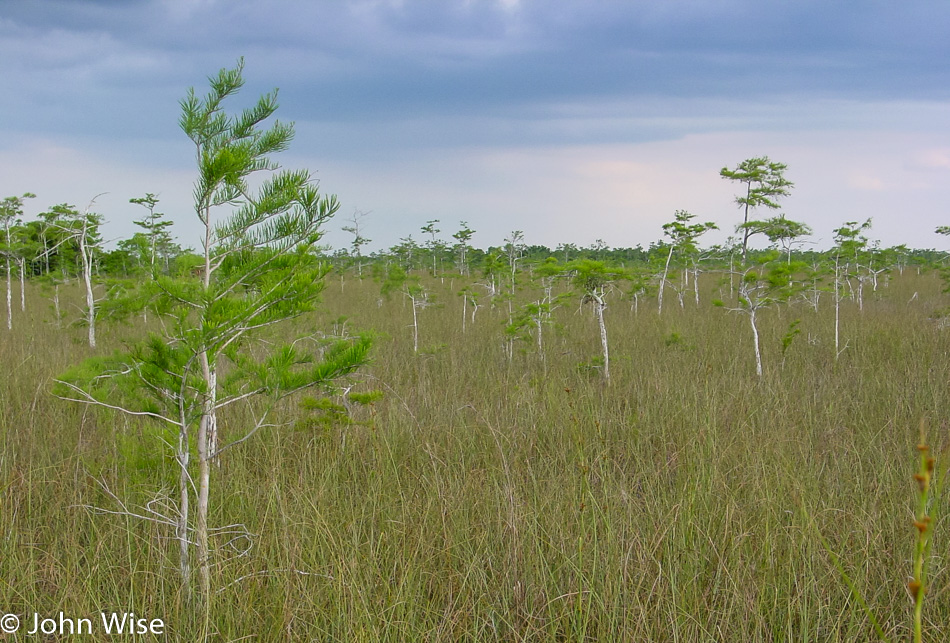
With the rain coming down and our shopping excursion into the visitor center finished it’s time to follow the road back up the way we came. Maybe we’ll escape the rain with the trek north, where it doesn’t look so foreboding. After only a few more miles, we start glimpsing sunlight behind the clouds as the rain quickly fades off. At the Royal Palm Visitor Center near the entrance of the Everglades is the Anhinga and Gumbo Limbo Trail that we passed by earlier in the day. The sun will set soon, and this dictates we take the shorter of the trails; our final walk in the Everglades today will be on the Anhinga Trail.
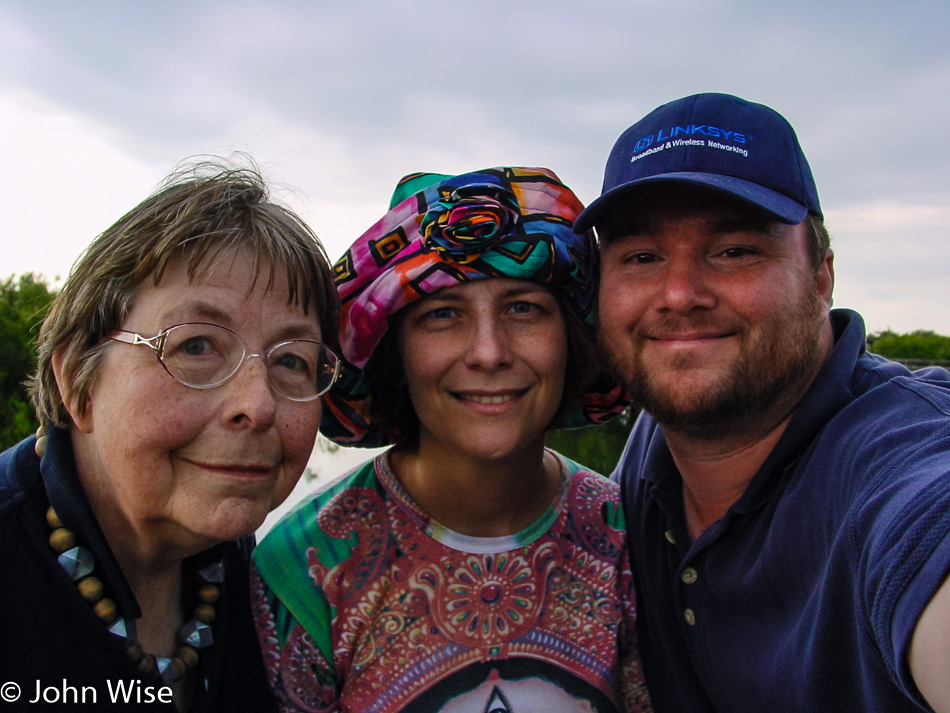
This trail was well worth saving till the end of the day. The southern part of the national park is a series of hammocks, grasslands, and waterways, while this trail area is better described as a wetland. Herons, green herons, egrets, hissing alligators, and various other creatures scurry under the brush, in the water, and among the trees.
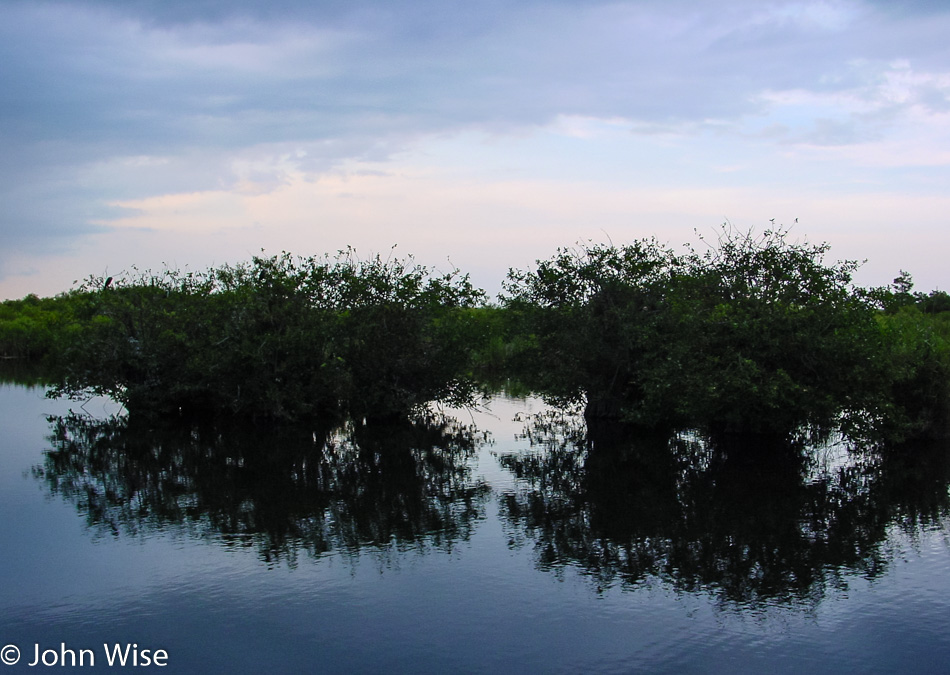
This has been our most intimate encounter with the fauna of the Everglades. Late dusk, and the waters are relatively still, mirroring the grey sky and trees. Our nearby star makes a final peek through a sliver of sky between the horizon and hanging clouds and begins its rest for the day.
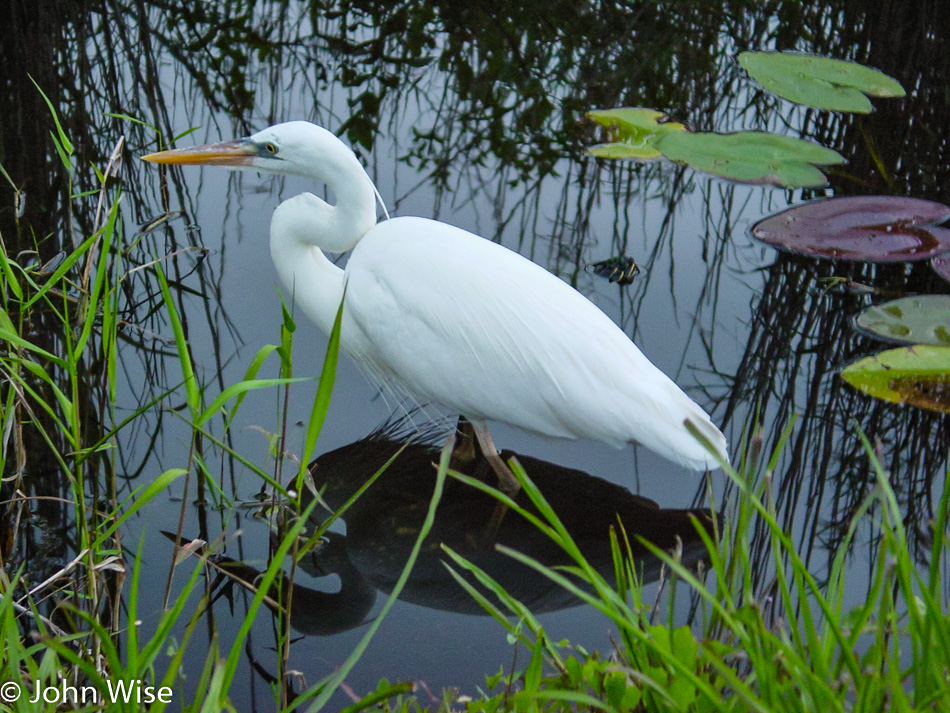
But the egret knows that there is still time for a couple more bites.